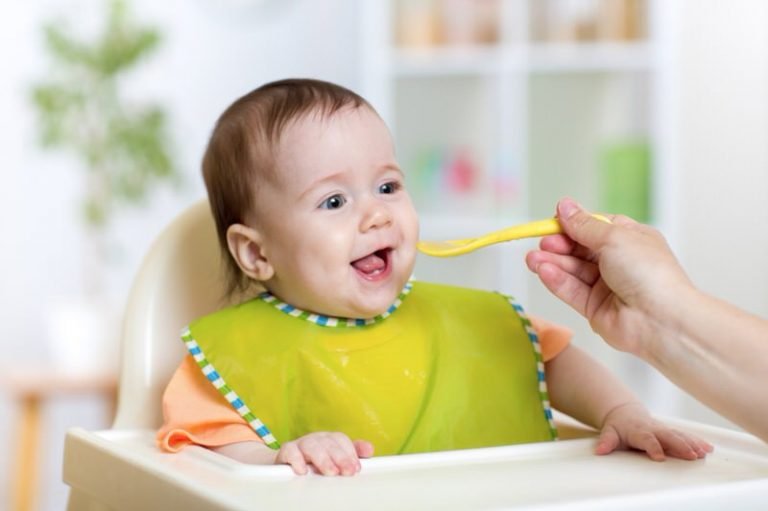Usually from the sixth month, your pediatrician will recommend you start with the first compotes, baby food and fruit purees.

As recommended by both the majority of medical specialist and the World Health Organization itself, there is no doubt that it is most advisable to maintain infant nutrition for at least the first 6 months exclusively with Breastfeeding.
Precisely, after this period, the different nutritional needs are modified, so from the sixth month is the ideal time to start with complementary feeding, starting with those known as transition -or intermediate- foods.
These foods belong to the groups adapted to meet the nutritional needs of the little one, and the best way to feed them is to start with crushed foods, in the form of purees and compotes, and then semi-solid. Likewise, if the mother so wishes, breastfeeding can be combined with complementary feeding, since breast milk continues to be the fundamental food of the baby until one year of age.
From what age can we give compotes and fruit porridges to the baby?
First of all, we must bear in mind that the feeding of the first 6 months of the child’s life is carried out exclusively with the breast or with a bottle. In the case of a bottle, generally using a milk formula, from cow’s milk (or goat’s), specially adapted to the baby’s needs.
Only when the baby’s weight gain is low, and as long as the pediatrician indicates or recommends it, can the milk be supplemented with gluten-free cereals, or with other nutrients.
In addition, throughout this first semester, the child usually does not need more water than what they receive through food, and they do not need an extra supplementary supply, except when they do not eat normally, have diarrhea or fever, or temperature the environment is high. Only in these cases is it necessary to replace fluids, since water losses are increased.
That said, from the sixth month it is possible to start with the administration of complementary foods, while breastfeeding or artificial feeding continues to be preferred (especially if it is yours).
In most cases, it is recommended that the baby receive fruit in the afternoon in the form of a puree (that is, in the form of compote or porridge). However, it is not advisable to start directly with the compotes that you find in the supermarket, but with purees or porridges made by you at home.
It is normal that, at first, the baby can reject new flavors, until little by little they begin to accept them. And every time you tend to like it more.
What aspects should you take into account with the introduction of the first fruits?
The first foods should be easy to digest. In addition, it is extremely important that they are unlikely to cause an allergic reaction. Thus, it is advisable to start with fruits such as apple, pear, banana and papaya. Of course, it must be ripe and tasty, so it is advisable to always taste it first before giving it to the little one.
While papaya and banana are two fruits that do not require cooking as long as they are perfectly ripe (since it is enough to crush them to make a puree or porridge alone or mixed with a little breast milk or formula), the same does not happen. With the pear or with the apple. It is necessary to cook them a little before, to soften them and be able to crush them.
Thus, the baby’s pediatrician will probably advise you to introduce each fruit separately, waiting one or two days to continue with another new fruit, to be able to identify with it which fruit may have caused an allergic reaction, if it arises. Don’t worry though, as it doesn’t tend to be that common.
It is important not to reduce the baby’s milk intake from the moment in which solid foods are started, since milk continues to be a fundamental food in the child’s diet.
| The first most suitable fruits | The most suitable first vegetables |
| Apple | Carrot |
| Money | Pumpkin |
| Plantain | Potato |
| Papaya | Boniato |
| Neighbor | |
| Parsnip |































